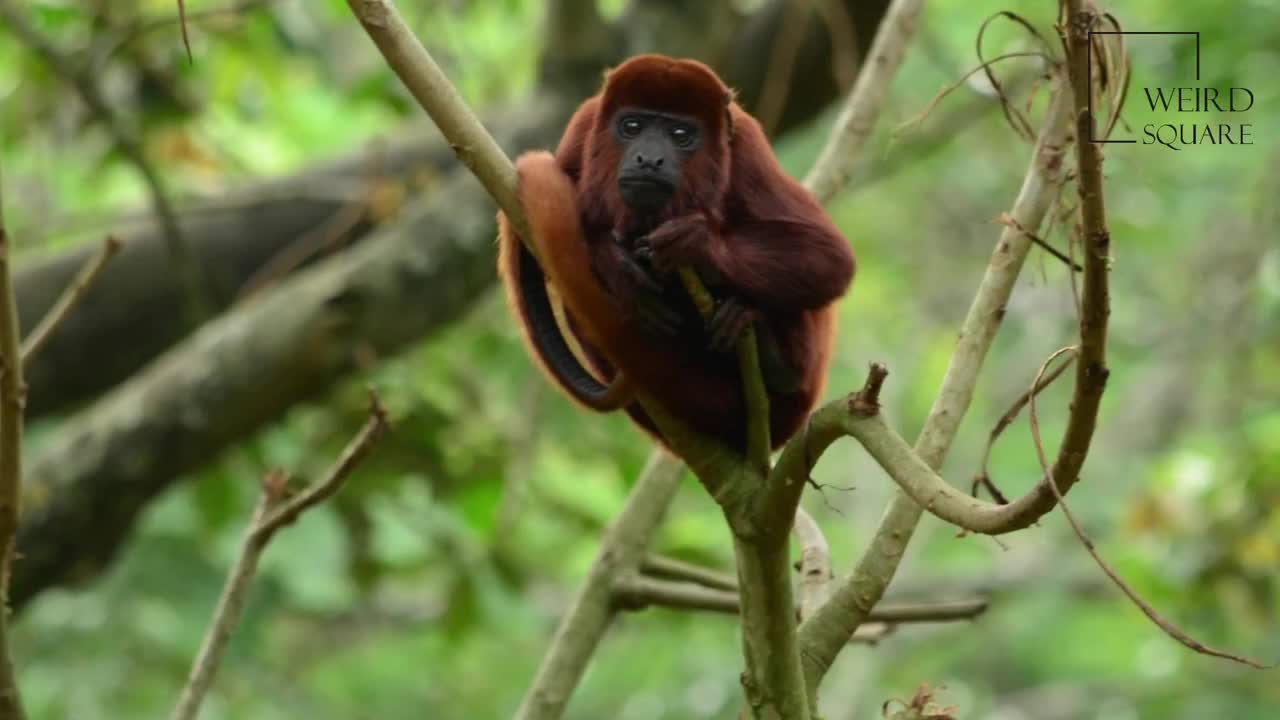Premium Only Content

Interesting facts about red howler monkey by weird square
The most, new, latest, shocking, weird, scary, funny, fascinating, interesting and amazing things | facts in the world.
Howler monkeys are among the largest of the New World monkeys. Fifteen species are currently recognized. Previously classified in the family Cebidae, they are now placed in the family Atelidae. These monkeys are native to South and Central American forests. Threats to howler monkeys include human predation, habitat destruction and being captured for pets or zoo animals. These monkeys are famous for their loud howls, which can travel three miles through dense rainforest.
Howler monkeys have short snouts and wide-set, round nostrils. Their noses are very keen, and they can smell out food (primarily fruit and nuts) up to 2 km away. Their noses are usually roundish snout-type, and the nostrils have many sensory hairs growing from the interior. They range in size from 56 to 92 cm (22 to 36 in), excluding their tails, which can be equally as long, in fact in some cases the tail has been found to be almost five times the body length. This is a prime characteristic. Like many New World monkeys, they have prehensile tails, which they use for picking fruit and nuts from trees. Unlike other New World monkeys, both male and female howler monkeys have trichromatic color vision. This has evolved independently from other New World monkeys due to gene duplication.They have lifespans of 15 to 20 years. Howler species are dimorphic and can also be dichromatic . Males are, on average, 1.5 to 2.0 kg heavier than females.
The hyoid of Alouatta is pneumatized, one of the few cases of postcranial pneumaticity outside the Saurischia. The volume of the hyoid of male howler monkeys is negatively correlated with the dimensions of their testes. Animal planet | Discovery | Netflix | Documentary | Animal World
| BBC Earth | NatGeoWild | Brave wilderness | The Dodo| Animal Aid Unlimited | Animal Planet | Real Wild | iPanda | Hope for Paws | Kruger Sightings | Discovery #animals
-
 58:10
58:10
Kimberly Guilfoyle
14 hours agoAmerica is Back & The Future is Bright: A Year in Review | Ep. 183
87.6K56 -
 3:03:27
3:03:27
vivafrei
19 hours agoEp. 242: Barnes is BACK AGAIN! Trump, Fani, J6, RFK, Chip Roy, USS Liberty AND MORE! Viva & Barnes
161K190 -
 8:09:50
8:09:50
Dr Disrespect
17 hours ago🔴LIVE - DR DISRESPECT - MARVEL RIVALS - GOLD VANGUARD
202K33 -
 1:15:00
1:15:00
Awaken With JP
16 hours agoMerry Christmas NOT Happy Holidays! Special - LIES Ep 71
228K190 -
 1:42:21
1:42:21
The Quartering
18 hours agoTrump To INVADE Mexico, Take Back Panama Canal Too! NYC Human Torch & Matt Gaetz Report Drops!
172K110 -
 2:23:15
2:23:15
Nerdrotic
17 hours ago $14.19 earnedA Very Merry Christmas | FNT Square Up - Nerdrotic Nooner 453
129K12 -
 1:14:05
1:14:05
Tucker Carlson
17 hours ago“I’ll Win With or Without You,” Teamsters Union President Reveals Kamala Harris’s Famous Last Words
228K379 -
 1:58:31
1:58:31
The Dilley Show
17 hours ago $36.58 earnedTrump Conquering Western Hemisphere? w/Author Brenden Dilley 12/23/2024
170K50 -
 1:09:59
1:09:59
Geeks + Gamers
18 hours agoSonic 3 DESTROYS Mufasa And Disney, Naughty Dog Actress SLAMS Gamers Over Intergalactic
115K21 -
 51:59
51:59
The Dan Bongino Show
19 hours agoDemocrat Donor Admits The Scary Truth (Ep. 2393) - 12/23/2024
937K3.13K